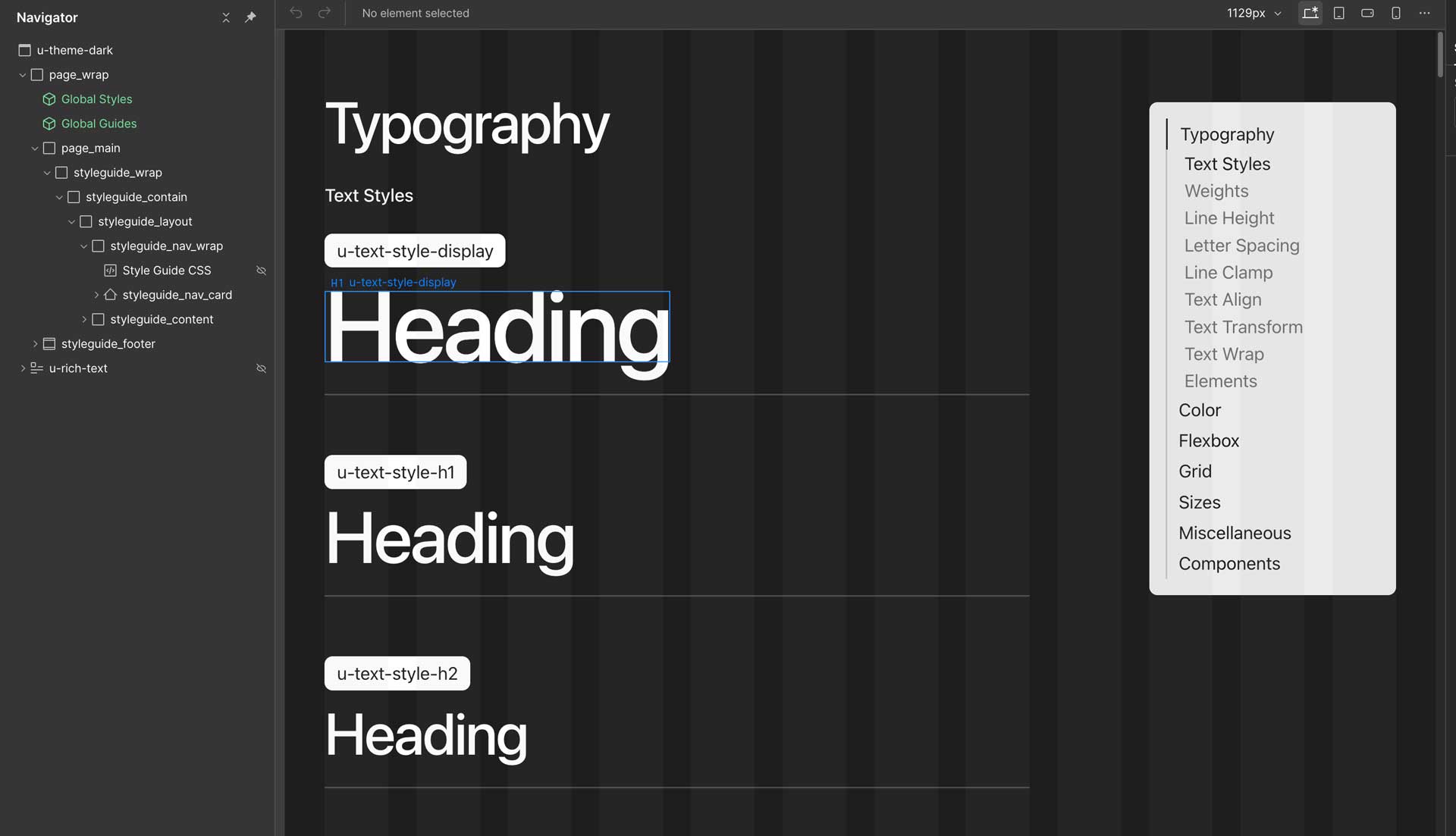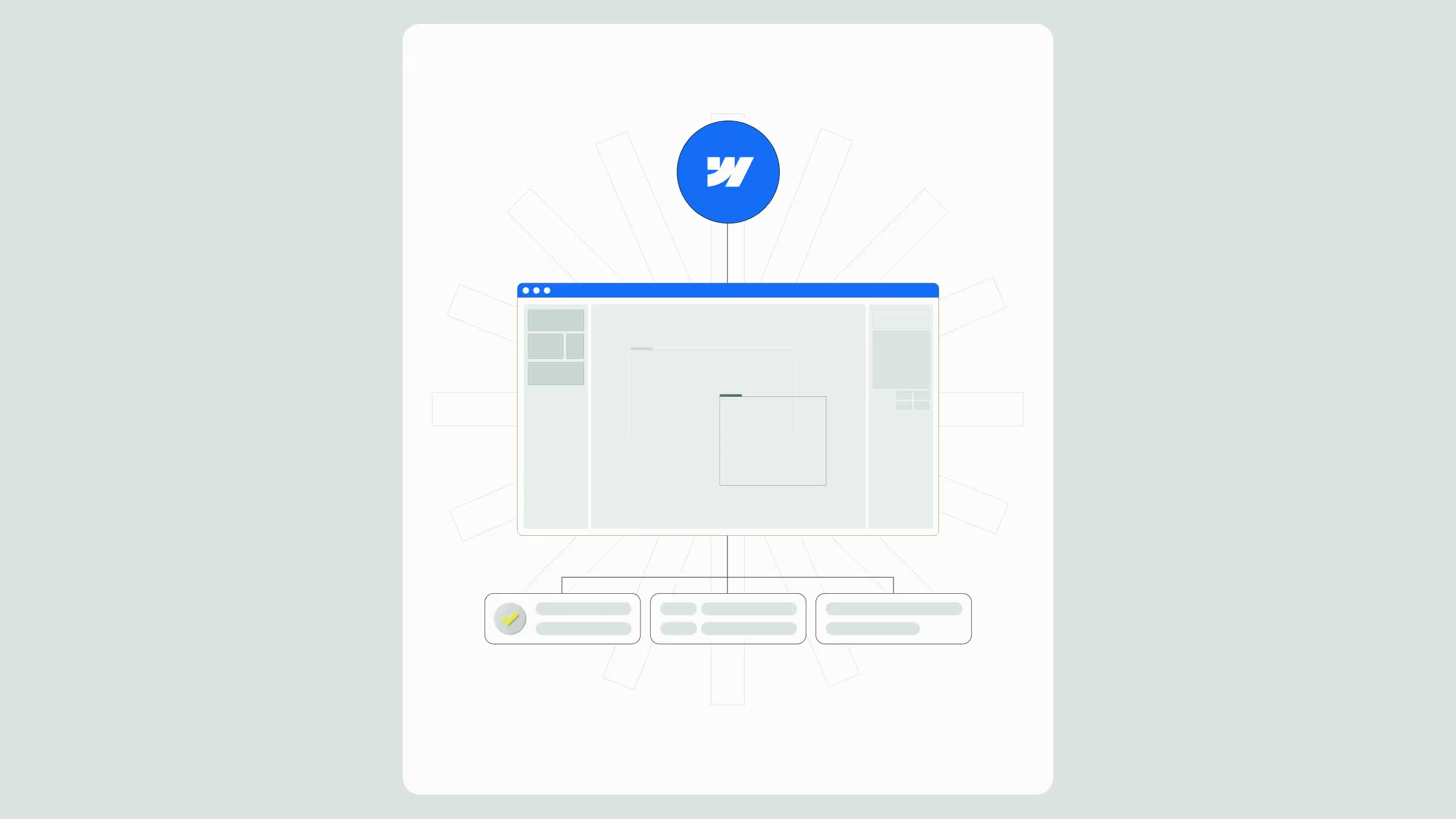Client-First vs Lumos: Which Webflow Framework to Use for Your Website

Client-First and Lumos offer two different ways to build Webflow websites. Client-First provides structure, organization, and teamwork, perfect for larger projects and agencies. Lumos delivers simplicity, speed, and creative freedom which is great for freelancers and smaller projects. Your choice depends on your goals, team size, and type of clients. Focus on the framework that helps you build faster without losing quality.
Client-First vs Lumos: Which Webflow framework to use for your website
When developing Webflow projects, choosing the right framework can have a huge impact on the efficiency, quality, and longevity of a project. Two of the most popular systems today are Client-First and Lumos, offering different methodologies, philosophies, and approaches to workflow organization.
For developers, designers, and agencies looking for a standardized and scalable process, understanding the differences between these two frameworks is essential for making an informed decision.
This article provides an in-depth analysis of all the key aspects influencing framework choice: ease of use, flexibility, scalability, performance, SEO, and maintenance. It also includes practical examples, statistics, and recommendations to help you choose the system that best suits your projects and team.
What Are Webflow Frameworks and Why Do They Matter?
A framework in Webflow is a system of rules, structures, and conventions that allows for consistent designing, naming, and maintaining of a website. Without a framework, every project may look and function differently, making collaboration and long-term maintenance challenging, especially when multiple developers work on the same site.
Additional Insight
Frameworks not only standardize the workflow but also significantly reduce errors, improve project scalability, and enhance communication within teams. By establishing clear conventions, developers can quickly understand how a site is structured, making onboarding new team members easier and reducing time spent troubleshooting inconsistencies. Moreover, frameworks facilitate better SEO practices, performance optimization, and easier future redesigns, providing long-term benefits beyond initial development.
Key Benefits of Using a Framework
- Faster website builds: predefined structures and classes save developers from recreating basic elements
- Easier maintenance: all elements are clearly labeled and organized, so any team member can easily find and update a section
- Better SEO: a clean structure improves readability for search engines
- Scalability: you can easily add new pages without losing order
In short, a framework brings system and logic where improvisation would otherwise exist. That’s exactly why Client-First and Lumos became the most popular systems within the Webflow community.
Client-First Framework – Basics and Benefits
Client-First is a framework created by Finsweet, known for its tools and educational resources for Webflow developers. Its main idea is clarity and predictability with every class, section, and component having a name that clearly describes its purpose.
Core Logic of the Client-First System
- Naming convention: uses logical, descriptive names like section-hero, padding-global, text-color-primary
- Hierarchy structure: each page follows a clear flow from wrapper to the smallest element
- Global classes: standardized spacing, typography, and colors
- Documentation and community: over 10,000 developers actively use and contribute to Client-First
Key Advantages of Client-First
- Easy to learn and understand: great for agencies with multiple developers
- Excellent documentation and video tutorials (Finsweet University)
- Perfect for teamwork: everyone follows the same structure
- Strong SEO and performance: clean structure helps search engines
Client-First is currently the most widely used framework in the Webflow ecosystem. According to the Finsweet community, more than 60% of Webflow developers use it for large-scale and team-based projects
Practical Example
In Broworks, when developing websites using the Client-First framework, the entire team can work in a coordinated way without confusion over classes or styling. Developers immediately understand the page structure and which classes to apply, which, on average, reduces development time by about 30%.

Lumos Framework – A Modern Approach to Webflow Development
Lumos is a newer Webflow framework that appeared as an alternative to Client-First.
It focuses on speed, minimalism, and modularity.
Unlike Client-First, Lumos uses shorter and simpler classes, making it easier for solo designers and small teams.
Key Features of Lumos
- Minimal class structure: fewer duplicates, faster styling
- Modular system: sections and components work like building blocks, making reorganization and testing easy
- Visual simplicity: focused on design flexibility
- Faster testing and publishing: great for prototypes and smaller projects
Benefits of Lumos
- Less technical weight: no need to follow complex conventions
- Perfect for freelancers handling multiple small projects
- More creative freedom: framework doesn’t limit layout or design
- Faster website launches, especially for smaller sites
Lumos is popular among UI/UX designers because it gives them more creative control without a heavy technical structure.

Client-First vs Lumos Comparison
Client-First and Lumos each bring unique advantages and trade-offs to the table. Selecting the right Webflow framework can significantly impact your workflow, the quality of your project, and its long-term maintainability.
In this section, we will analyze the core factors that influence framework choice and help you determine which system is best suited for your specific needs.
We will focus on several key criteria: ease of use, flexibility, scalability, and performance, etc. By examining these aspects, you can better understand how each framework integrates into your workflow and addresses your project requirements.
Additionally, we will provide practical examples, use cases, and insights from developers who actively work with these frameworks.
Ease of use
Client-First
The system’s intuitiveness allows designers and developers to navigate the Designer easily without lengthy learning curves. Every section, component, and class has logical and descriptive names that immediately reveal their purpose. This means even new team members can quickly understand the site structure and add or modify elements without errors.
Predefined global classes for spacing, typography, and colors further speed up development. Agencies using Client-First have reported a 20–30% reduction in development time on standard projects because teams can easily identify and reuse existing classes instead of creating new ones from scratch.
Lumos
The class system and Variable Modes provide high control over styling but require a bit more time to understand initially. The advantage is that global value changes automatically affect all linked components, which is particularly useful for larger projects or those undergoing frequent redesigns.
Freelancers and solo designers appreciate the simplicity of shorter, modular classes, allowing quick testing and section reorganization, while long-term maintainability is achieved through careful planning of Variable Modes.
Flexibility
Client-First
Excellent for projects with standard design requirements, but for more complex visuals, creating custom classes is often necessary.
This can limit creative flexibility and increase the number of classes the team must track. However, thanks to logical hierarchy and clearly defined sections, even complex designs can be executed with minimal risk of conflicts.
Lumos
The system is designed for maximum flexibility. Grid and Flexbox layouts cover both basic and advanced needs, while Variable Modes allow quick customization of colors and styles per page or section.
This means complex visual concepts can be implemented without additional custom classes. Section modularity allows easy reorganization or testing of different design variants, accelerating workflow and easing project scaling.
Scalability
Client-First
Well-suited for small to medium projects. The system allows easy addition of new pages while maintaining hierarchy and logical classification.
However, the lack of global variables and multiplication of custom classes can make large-scale projects with hundreds of pages harder to maintain, increasing the likelihood of errors.
Lumos
Excellent scalability thanks to modular components and global variables. Each component can be updated independently, with changes applied globally, reducing the risk of errors.
This is especially useful for large projects or those that require frequent updates and redesigns. Lumos’s scalability allows teams and solo designers to respond quickly to changes without disrupting the overall site structure.
Performance
Client-First
Provides a solid balance between clean structure and functionality. However, creating too many custom classes and additional divs can increase CSS and HTML weight, which can impact page load speed on larger websites.
For small to medium projects, performance remains more than sufficient, and the clean hierarchy helps optimize SEO and UX elements.
Lumos
The structure is optimized by reducing unnecessary code and supporting global variables. Fewer divs and a robust utility class system result in a cleaner structure, faster loading, and improved SEO performance. Ideal for high-traffic sites or projects where speed is critical, such as e-commerce platforms or startup landing pages.
Search Engine Optimization
Client-First
A clear and logical HTML hierarchy facilitates search engine optimization. Each section and component can have appropriate alt tags, meta descriptions, and class names that are easily recognized by both SEO tools and developers.
Lumos
The clean and modular structure allows SEO implementation with minimal effort. Variable Modes and global variables help apply SEO settings uniformly across the entire site, making maintenance easier and improving search engine rankings.
Maintenance
Client-First
Standardized classes and hierarchy allow teams to easily maintain and update websites. However, for large sites with many custom classes, maintenance can become more complex and may require additional documentation.
Lumos
Flexibility and modularity make long-term maintenance easier. Changes in a single component are automatically applied globally, reducing the need for manual updates in multiple sections. Ideal for projects that undergo frequent updates or redesigns.
Teamwork
Client-First
All team members work within the same structure and logic, reducing errors and facilitating communication. Documentation and the Finsweet community further help new team members become productive quickly.
Lumos
Less formal hierarchy and modularity allow solo work, but also enable teams to quickly reorganize sections without disrupting the overall structure. Although not as strict as Client-First, teams can achieve high efficiency with proper planning and agreement on Variable Modes.
Community Support
Client-First
A large developer community and official Finsweet support allow quick problem-solving and learning of new techniques. Tutorials, documentation, and forums provide practical solutions and real-world examples.
Lumos
Although it does not have official support like Client-First, an active community of designers and developers shares resources, tips, and examples, enabling faster mastery of the framework and implementation of advanced techniques.
Case Studies
Client-First
A US-based agency using Client-First for e-commerce projects reported that the framework allows the team to work simultaneously on different sections of a website without conflicts in class names or styles. Development time was reduced by about 30%, and site maintenance was simplified thanks to standardized classes.
Lumos
A freelancer in Europe applied Lumos to several smaller projects and noticed significant acceleration in redesign implementation and testing different design variations. Variable Modes allowed global changes to colors and styles, reducing manual work and minimizing errors.
Client-First vs Lumos: The main differences
Statistics: Which Framework Do Webflow Developers Use More?
According to a community survey conducted across Reddit and Finsweet Forum (2024), the results show:
- Client-First: used by around 63% of developers
- Lumos: used by around 24%
- Other frameworks or custom systems: about 13%
These numbers confirm that Client-First has a stronger community and better support, while Lumos is gaining attention among independent designers.
Which Framework Should You Choose?
Choosing between Client-First and Lumos isn’t about which one is “better”, it’s about which one is better for you.
If you lead a team, build complex projects, or need a standardized system that improves collaboration, Client-First is the right choice. If you’re a freelancer who values speed, simplicity, and flexibility, Lumos will let you focus more on design and less on structure.
The best framework is the one that makes your workflow simpler, not more complicated.

.svg)
.svg)


.svg)




